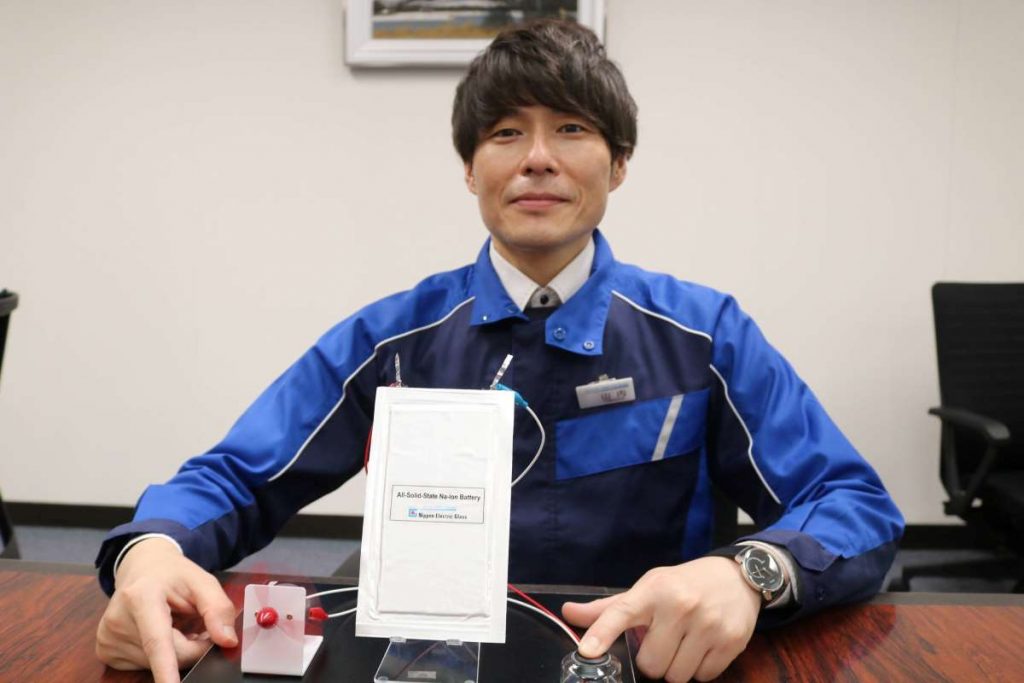このページを 日本語 で読む
As interest in decarbonization of society increases, progress in the development of electric vehicles (EVs) and utilization of renewable energies is accelerating research in next-generation storage cells, which are indispensable for both.
Lithium-ion batteries, which are currently in the mainstream, played a major role in the popularization of smartphones.
But lithium, the raw material, is unevenly distributed in South America and elsewhere, posing the risk of supply being affected by international relations.
In this context, sodium, a raw material in abundance on earth, is starting to attract attention as a possible raw material. Expectations for use in EV batteries are also growing.
In natural resource-scarce Japan, new ideas and ingenuity are the keys to a success story on the development of these next-generation storage cells.
‘Farewell’ in Five Years
“We will put sodium-ion batteries into use in 2023.”
This announcement by Chinese battery manufacturer Contemporary Amperex Technology Co. Limited (CATL) in July of 2021 sent out shock waves in the industry. It would be the world’s first commercialization of a sodium-ion battery—one that could quickly replace the mainstream lithium-ion battery.
Professor Shinichi Komaba of the Tokyo University of Science, a leading researcher of sodium-ion batteries, noted, “We may be saying ‘farewell’ to lithium in five years.” In 2009, Dr Komaba successfully developed the world's first sodium-ion battery that can be stably used and recharged more than 100 times.
Currently, lithium-ion batteries are widely used in smartphones, laptops, and digital cameras. The batteries drew attention when they were first introduced for having a large storage capacity given their small size, and have been a driving force in the production of new IT devices, like smartwatches.
However, they do pose some risks. There is the danger of combustion due to damage or overcharging, and there are documented cases where this has happened.
Wider usage of renewable energies like solar and wind power have given rise to the demand for even higher capacity storage cells, further intensifying competition for lithium. Data shows that the price of the raw material lithium carbonate has spiked by five fold during the past year.
Under these circumstances, sodium has been singled out as a new material for batteries. Found all over the earth, sodium can be extracted from seawater, making it virtually inexhaustible.
Overturning Common Knowledge
Sodium-ion batteries operate on the same principle as lithium-ion batteries. The battery is charged and discharged as sodium ions travel between the positive and negative electrodes.
Despite having the same mechanism as lithium and sodium being abundantly available, batteries using sodium have yet to be commercialized due to a fundamental weakness when compared to lithium.
Lithium’s atomic number, which is determined by the number of protons in the nucleus, is 3, while sodium’s is 11. Generally, the higher the atomic number, the heavier the material. Theoretically, a sodium-ion battery would be heavier than a lithium ion battery, even when they have the same capacity.
However, technological advances are trying to overturn such realities. Two years ago, Dr Komaba was able to make a significant improvement to the storage capacity significantly by a special processing of the carbon material used in the negative electrode.
“If the development of the positive electrode progresses, we may be able to exceed the capacity of lithium,” Dr Komaba reported confidently.
Furthermore, as sodium ions move faster than lithium ions, charging times for sodium-ion batteries could be shortened to a range one-half to one-fifth that of lithium-ion batteries. They are also reputedly stronger in low-temperature environments, where output tends to drop.
Solid-State Batteries
Sodium-ion batteries could also play a part in the development of batteries that take a completely different form from conventional storage cells.
Conventional storage cells have an electrolyte solution between the negative and positive electrodes. When this liquid is flammable, there is risk of fire, and it can freeze in low temperatures causing a reduction in output or malfunction.
Due to these concerns, research in solid-state batteries in which the electrolyte solution is replaced with a solid material, is progressing. These work even in low temperatures, and the combustion risk is also greatly reduced.
Foreign and domestic companies are competing to develop this technology. In November of 2021, Nippon Electric Glass (Otsu City) announced that they had developed a solid sodium-ion battery that is unlikely to combust using crystallized glass for the positive and negative electrodes.
The battery’s plate-like structure has a thickness of 0.3 millimeters. The required output is achieved by stacking multiple plates.
The company is currently working to achieve mass production by the mid-2020s. Masaaki Kadomi, 57, general manager of research and development notes, “Resource-scarce Japan has nothing to lose by focusing our efforts on sodium-ion batteries. We aim to make a name for ourselves in the movement toward decarbonization.”
このページを 日本語 で読む
